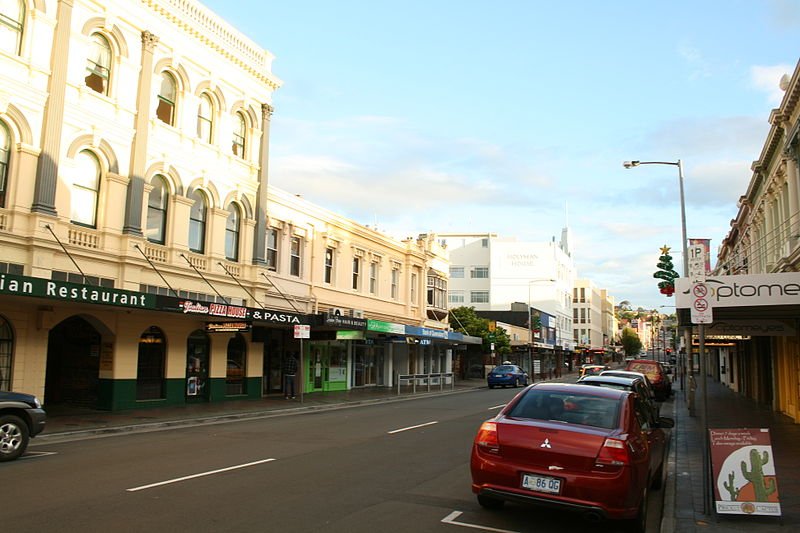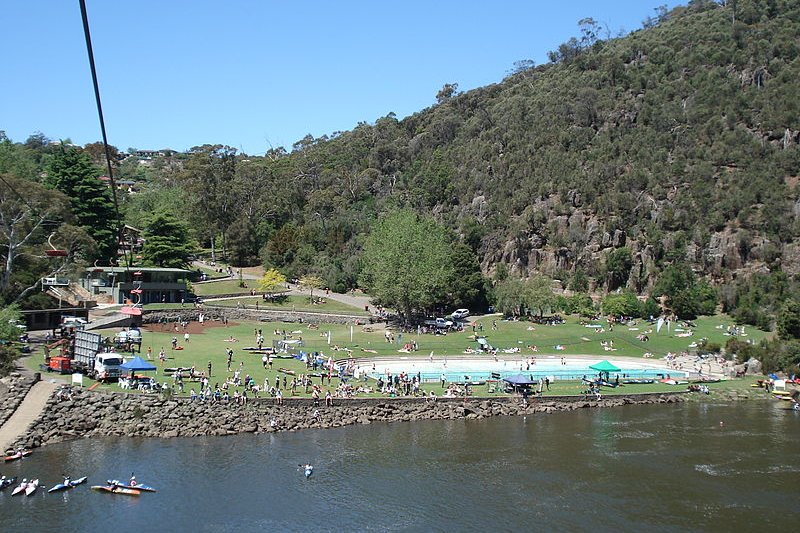 Street view in Launceston, Tasmania
Street view in Launceston, TasmaniaSource: https://commons.wikimedia.org/wiki/File:Launceston-Tasmania-Australia04.JPG
Author: Poco a poco

Launceston is a city in northern Tasmania, at the confluence of the North Esk and the South Esk rivers, where they continue as the Tamar Tiver. It has a population of 106,000 people (2012 estimate). This makes Launceston the second biggest city in Tasmania after Hobart, and the 9th biggest non-capital city in Australia.
Launceston is one of the oldest cities in Australia. The area around Launceston was inhabited by Tasmanian Aborigines when explorers George Bass and Matthew Flinders arrived in 1798. The city was founded in between 1804 and 1806. After a number of relocations, it settled at a site originally named Patersonia, after its founder Lt. Col. William Paterson. However Paterson renamed it after Launceston in Cornwall, England, in honor of the Governor of New South Wales, Captain Philip Gidley King, who was born there.
Due to its long history, Launceston has a good number of historic buildings, particularly in the Georgian and Victorian styles, along with those building in the early 20th century, in the Art Deco style. Strictly enforced building regulations limit the height of buildings in the Central Business District to no more than five storeys.
Today Launceston is the main city in northern Tasmania. It is also becoming one of its major tourist destinations.
 Cataract Gorge in Launceston
Cataract Gorge in LauncestonSource: https://commons.wikimedia.org/wiki/File:Cataract_Gorge_canoe.JPG
Author: Aaroncrick

Visiting Launceston
There are regular flights between Launceston and Melbourne on QantasLink, Virgin Blue, Jetstar and Tiger Airways. Places of Interest in Launceston
Places of Interest in Launceston
- Cataract Gorge
River gorge at the lower section of the South Esk River. - Launceston City Park
Public park established by the Launceston Horticultural Society in the 1820s. - Launceston General Post Office
Historic building dating to the 1880s. Its clock tower was added in the early 20th century. - Tasmania Zoo
Zoo occupying a 360-ha (900-acre) site, housing the largest collection of Tasmanian wildlife, including the Tasmanian Devil, wombat, quoll and other animals. - Trevallyn Dam
Dam on the South Esk River.
Back to Discover Australia
 Latest updates on Penang Travel Tips
Latest updates on Penang Travel Tips

Copyright © 2003-2025 Timothy Tye. All Rights Reserved.

 Go Back
Go Back